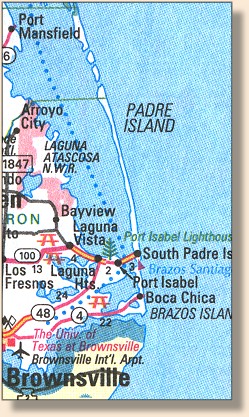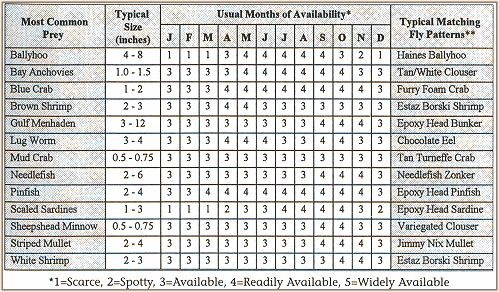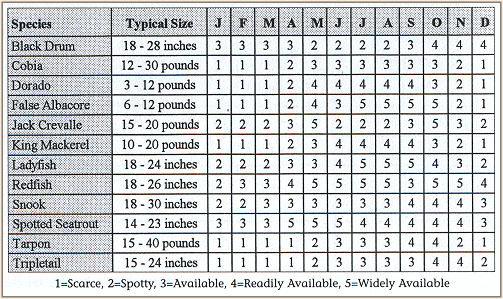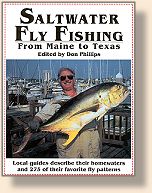The Laguna Madre of south Texas is the largest hypersaline lagoon system in
the United States. The lower basin is approximately 50 miles in length, with
an average width of four miles. Laguna Madre is bounded on the east by
the 115-mile-long Padre Island. Much of the western margin of the lagoon
is part of the 50,000-acre Laguna Atascosa National Wildlife Refuge, which
provides important habitat for the endangered ocelot and several hundred species
of birds. Several of these bird species, including aplomado falcon, plain
chachalaca, green jay and great kiskadee, are unique to south Texas.
 In an average year, the south Texas coast receives less than 30 inches of
rainfall; the upland plant community if dominated by hardy species well
adapted to the arid climate. Elevated areas are typically covered with a
dense growth of mesquite, huisache, yacca, prickly pear, retama, cenizo and
other species. Red mangroves are absent in south Texas because hard winter
freezes cause complete mortality. Nevertheless, a narrow belt of black
mangroves exists along many of the shorelines, especially near Brazos Santiago
Pass at the extreme southern end of the lagoon. Because freshwater flow into
the lagoon in the recent past has been only slight and because much of the
lagoon floor is occupied by seagrass meadows, Laguna Madre is one of the
clearest by systems on the Texas coast. Flats on the western side of the
lagoon support luxuriant beds of turtle, shoal and manatee grass. In
contrast, the flats along the eastern margin are covered by wind and
storm-deposited sands and resemble misplaced bonefish habitat.
In an average year, the south Texas coast receives less than 30 inches of
rainfall; the upland plant community if dominated by hardy species well
adapted to the arid climate. Elevated areas are typically covered with a
dense growth of mesquite, huisache, yacca, prickly pear, retama, cenizo and
other species. Red mangroves are absent in south Texas because hard winter
freezes cause complete mortality. Nevertheless, a narrow belt of black
mangroves exists along many of the shorelines, especially near Brazos Santiago
Pass at the extreme southern end of the lagoon. Because freshwater flow into
the lagoon in the recent past has been only slight and because much of the
lagoon floor is occupied by seagrass meadows, Laguna Madre is one of the
clearest by systems on the Texas coast. Flats on the western side of the
lagoon support luxuriant beds of turtle, shoal and manatee grass. In
contrast, the flats along the eastern margin are covered by wind and
storm-deposited sands and resemble misplaced bonefish habitat.
A variety of game fish my be encountered on the clear sand and grass flats
of the lagoon, but redfish (red drum) and seatrout are the undisputed main
attractions. Anglers search for "tailing" fish in grassy areas and "backing"
fish along the shorelines. These two "showy" forms of behavior are most
common early and late in the day, and during overcast periods. Large
seatrout are often encountered in extremely shallow water in spring and
summer, especially during the early morning; three IGFA record seatrout have
been landed here.
As the prey chart illustrates, [below] a wide assortment of forage species
occur here. Most local fly-fishers favor fairly small shirmp and crab
imitations (size 4-6 hooks), and the concensus is that larger baitfish
imitations (size2-1/0 hooks) are often more productive for the larger
(25 inches plus) seatrout. For school seatrout in 4- to 5-foot deep
basins and along channel edges, small Clousers (size 4-2) fished on sink-tip
lines are hard to beat.
Three species of snook occur in the lagoon and are most commonly encountered
at the southern end of the basin. The Brownsville Ship Channel, Arroyo
Colorado and the Rio Grande River appear to be the principal wintering
areas for resident south Texas snook, with dispersal in the spring toward
Brazos Santiago Pass, the Padre Island surf and the lower end of the main
lagoon. Carry an assortment of finger mullet, sardine and bay anchovy
imitations and let the fish pick their favorites. Snook are regarded as relatively
rare jewels in Texas, and the Lower Lanuna Madre Fly Fishing Association is
working by example to promote a catch-and-release-only fishery for them.

The communities of Port Mansfield, Port Isabel, Arroyo City and South
Padre Island are the principal access points for anglers fishing Laguna
Madre. All of them have a range of available lodging, good restaurants,
public boat-launching facilities and marinas. Guides familiar with the
technical aspects of fly-fishing are available in each of these
communities. . .[a list of these guides is provided in the book.] Visiting
anglers wishing to explore on their own can find shallow draft rental boats
in each of the coastal towns. With the notable exception of South Bay,
extensive oyster reefs are absent within the lagoon, but vast expanses
of very shallow water are present. Consult the charts, navigate
cautiously and monitor depth closely.
A productive venue for shorebound anglers is the Padre Island surf.
A 4-wheel-drive vehicle will allow you to patrol the 28 miles of
beach between the southern tip of Padre Island and the East Cut,
a manmade channel that bisects the island to the north and provides
Gulf of Mexico access from Port Mansfield. During late summer and
fall, the surf can be calm and clear, with a variety of gamefish
present. Spanish mackerel, ladyfish, seatrout and redfish are
fairly common, with jack crevalle and tarpon showing up from time
to time, particularly in the vicinity of large schools of scaled
sardines, bay anchovies, gulf menhaden and Atlantic thread herring.
The granite jetties at Brazos Santiago Pass and East Cut are good
places to try and jump a tarpon. Local tarpon anglers fish 3- to 4-inch
sardine imitations (1/0 to 3/0 hooks) at dawn and dusk, keeping an
eye out for the rolling pods of tarpon. Migratory groups of large
jack crevalle are usually present along the beach and around the
jetties during May and October. When the light is good, look for their
silhouettes in the nearshore swells.

Local fly-fishers favor 7- or 8-weight outfits for the mid-size
game fish such as redfish, seatrout, black drum and snook. During
calm conditions, we occasionally scale back to 5- or 6-weight
outfits for these same species. For tarpon, king macherel, cobia
and large jack crevalle, a 10- or 11-weight is more appropriate.
Most tarpon fly-caught locally are not especially large, but they
can be difficult to lift up from deep water; a bigger gun will
allow you to release them in good condition. Reels for these
inshore species should be capable of holding a floating line
plus 125 to 150 yards of 20-pound backing. For sight-fishing to
redfish and seatrout on very shallow flats, I prefer 12-foot leaders
with 10- to 12-pound tippets. Shock leaders are required for tarpon
and snook: 60 - and 30-pound, respectively, work well. ~ Capt. Eric Glass

About Eric
An avid fly-fisher since age 12, Capt. Eric Glass has fished the
lower Laguna Madre for 16 years; working as a full-time fly-fishing
guide for the past six years. His credentials include a degree in
aquatic biology. Eric has made numerous instructional appearances
for regional angling expositions, fly-fishing clubs and fly shops,
plus an appearance on ESPN's "Orvis Sporting Life" with Rick Ruoff.
Eric has been a Scott Fly Rod Pro Staff member for the past three
years.

Credits:
This article is an excerpt from Saltwater Fly Fishing, From Maine to
Texas, Edited by Don Phillips and published by
Frank Amato Publications. Check out the Review section for
a complete review.
|




 In an average year, the south Texas coast receives less than 30 inches of
rainfall; the upland plant community if dominated by hardy species well
adapted to the arid climate. Elevated areas are typically covered with a
dense growth of mesquite, huisache, yacca, prickly pear, retama, cenizo and
other species. Red mangroves are absent in south Texas because hard winter
freezes cause complete mortality. Nevertheless, a narrow belt of black
mangroves exists along many of the shorelines, especially near Brazos Santiago
Pass at the extreme southern end of the lagoon. Because freshwater flow into
the lagoon in the recent past has been only slight and because much of the
lagoon floor is occupied by seagrass meadows, Laguna Madre is one of the
clearest by systems on the Texas coast. Flats on the western side of the
lagoon support luxuriant beds of turtle, shoal and manatee grass. In
contrast, the flats along the eastern margin are covered by wind and
storm-deposited sands and resemble misplaced bonefish habitat.
In an average year, the south Texas coast receives less than 30 inches of
rainfall; the upland plant community if dominated by hardy species well
adapted to the arid climate. Elevated areas are typically covered with a
dense growth of mesquite, huisache, yacca, prickly pear, retama, cenizo and
other species. Red mangroves are absent in south Texas because hard winter
freezes cause complete mortality. Nevertheless, a narrow belt of black
mangroves exists along many of the shorelines, especially near Brazos Santiago
Pass at the extreme southern end of the lagoon. Because freshwater flow into
the lagoon in the recent past has been only slight and because much of the
lagoon floor is occupied by seagrass meadows, Laguna Madre is one of the
clearest by systems on the Texas coast. Flats on the western side of the
lagoon support luxuriant beds of turtle, shoal and manatee grass. In
contrast, the flats along the eastern margin are covered by wind and
storm-deposited sands and resemble misplaced bonefish habitat.